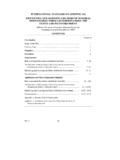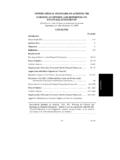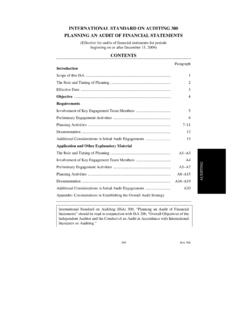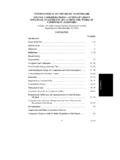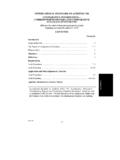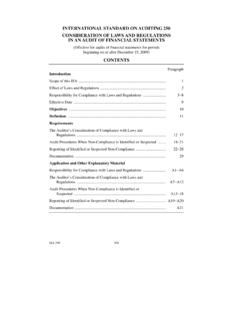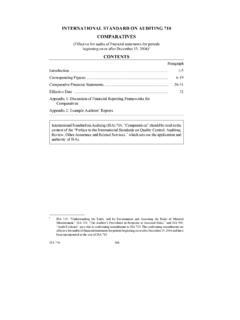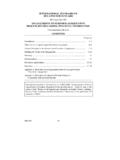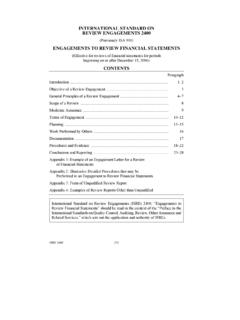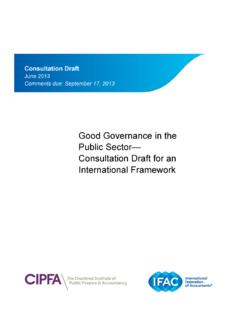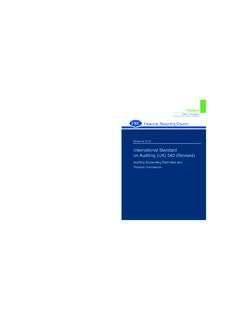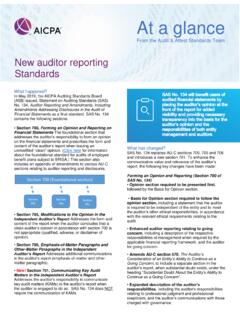Transcription of INTERNATIONAL STANDARD ON AUDITING 315 …
1 ISA 315 343 AUDITING INTERNATIONAL STANDARD ON AUDITING 315 understanding THE entity AND ITS ENVIRONMENT AND ASSESSING THE RISKS OF MATERIAL MISSTATEMENT (Effective for audits of financial statements for periods beginning on or after December 15, 2004) CONTENTS Paragraph Introduction .. 1-5 Risk Assessment Procedures and Sources of Information about the entity and its Environment, Including its Internal Control .. 6-19 understanding the entity and Its Environment, Including Its Internal Control .. 20-99 Assessing the Risks of Material Misstatement .. 100-119 Communicating with those Charged with Governance and Management .. 120-121 Documentation .. 122-123 Effective Date.
2 124 Appendix 1: understanding the entity and Its Environment Appendix 2: Internal Control Components Appendix 3: Conditions and Events that May Indicate Risks of Material Misstatement INTERNATIONAL STANDARD on AUDITING (ISA) 315, Obtaining an understanding of the entity and Its Environment and Assessing the Risks of Material Misstatement should be read in the context of the Preface to the INTERNATIONAL standards on Quality Control, AUDITING , Review, Other Assurance and Related Services, which sets out the application and authority of ISAs. The IAASB s clarity drafting conventions have been applied to ISA 315.
3 ISA 315 (Redrafted), Identifying and Assessing the Risks of Material Misstatement Through understanding the entity and Its Environment can be found in Part II of the Handbook of INTERNATIONAL AUDITING , Assurance, and Ethics Pronouncements. It is effective for audits of financial statements for periods beginning on or after December 15, 2009. understanding THE entity AND ITS ENVIRONMENT AND ASSESSING THE RISKS OF MATERIAL MISSTATEMENT ISA 315 344 Introduction 1. The purpose of this INTERNATIONAL STANDARD on AUDITING (ISA) is to establish standards and to provide guidance on obtaining an understanding of the entity and its environment, including its internal control, and on assessing the risks of material misstatement in a financial statement audit.
4 The importance of the auditor s risk assessment as a basis for further audit procedures is discussed in the explanation of audit risk in ISA 200, Objective and General Principles Governing an Audit of Financial Statements. 2. The auditor should obtain an understanding of the entity and its environment, including its internal control, sufficient to identify and assess the risks of material misstatement of the financial statements whether due to fraud or error, and sufficient to design and perform further audit procedures. ISA 500, Audit Evidence, requires the auditor to use assertions in sufficient detail to form a basis for the assessment of risks of material misstatement and the design and performance of further audit procedures.
5 This ISA requires the auditor to make risk assessments at the financial statement and assertion levels based on an appropriate understanding of the entity and its environment, including its internal control. ISA 330, The Auditor s Procedures in Response to Assessed Risks discusses the auditor s responsibility to determine overall responses and to design and perform further audit procedures whose nature, timing, and extent are responsive to the risk assessments. The requirements and guidance of this ISA are to be applied in conjunction with the requirements and guidance provided in other ISAs. In particular, further guidance in relation to the auditor s responsibility to assess the risks of material misstatement due to fraud is discussed in ISA 240, The Auditor s Responsibility to Consider Fraud in an Audit of Financial Statements.
6 3. The following is an overview of the requirements of this STANDARD : Risk assessment procedures and sources of information about the entity and its environment, including its internal control. This section explains the audit procedures that the auditor is required to perform to obtain the understanding of the entity and its environment, including its internal control (risk assessment procedures). It also requires discussion among the engagement team about the susceptibility of the entity s financial statements to material misstatement. understanding the entity and its environment, including its internal control. This section requires the auditor to understand specified aspects of the entity and its environment, and components of its internal control, in order to identify and assess the risks of material misstatement.
7 Assessing the risks of material misstatement. This section requires the auditor to identify and assess the risks of material misstatement at the financial statement and assertion levels. The auditor: understanding THE entity AND ITS ENVIRONMENT AND ASSESSING THE RISKS OF MATERIAL MISSTATEMENT ISA 315 345 AUDITING Identifies risks by considering the entity and its environment, including relevant controls, and by considering the classes of transactions, account balances, and disclosures in the financial statements; Relates the identified risks to what can go wrong at the assertion level; and Considers the significance and likelihood of the risks.
8 This section also requires the auditor to determine whether any of the assessed risks are significant risks that require special audit consideration or risks for which substantive procedures alone do not provide sufficient appropriate audit evidence. The auditor is required to evaluate the design of the entity s controls, including relevant control activities, over such risks and determine whether they have been implemented. Communicating with those charged with governance and management. This section deals with matters relating to internal control that the auditor communicates to those charged with governance and management. Documentation. This section establishes related documentation requirements.
9 4. Obtaining an understanding of the entity and its environment is an essential aspect of performing an audit in accordance with ISAs. In particular, that understanding establishes a frame of reference within which the auditor plans the audit and exercises professional judgment about assessing risks of material misstatement of the financial statements and responding to those risks throughout the audit, for example when: Establishing materiality and evaluating whether the judgment about materiality remains appropriate as the audit progresses; Considering the appropriateness of the selection and application of accounting policies, and the adequacy of financial statement disclosures.
10 Identifying areas where special audit consideration may be necessary, for example, related party transactions, the appropriateness of management s use of the going concern assumption, or considering the business purpose of transactions; Developing expectations for use when performing analytical procedures; Designing and performing further audit procedures to reduce audit risk to an acceptably low level; and Evaluating the sufficiency and appropriateness of audit evidence obtained, such as the appropriateness of assumptions and of management s oral and written representations. understanding THE entity AND ITS ENVIRONMENT AND ASSESSING THE RISKS OF MATERIAL MISSTATEMENT ISA 315 3465.
